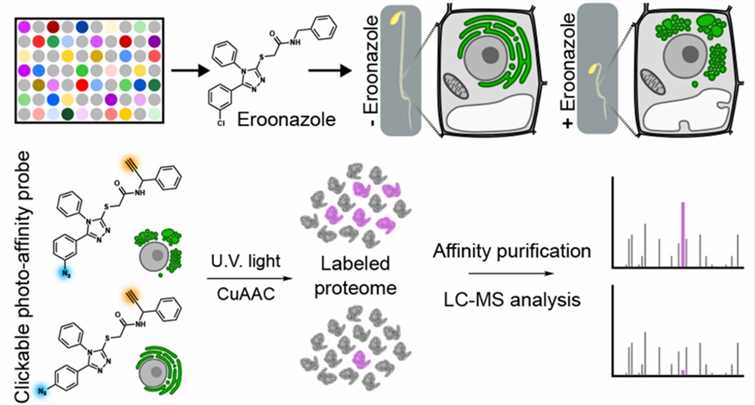The plant endomembrane system consists of several distinct and specialized compartments, including the endoplasmic reticulum (ER), the Golgi, the vacuole, and endosomal compartments. Together, they form a highly dynamic, fundamental, and interconnected system responsible for the synthesis, transport, degradation, and segregation of macromolecules. In multicellular organisms, traditional genetic approaches are challenging to anatomize endomembrane function due to the redundancy and importance of genes, making complementary small molecule approaches attractive.
Lifeasible is a leading provider of comprehensive, high-quality services for plant sciences. We provide an interference probe of plant endoplasmic reticulum for research purposes to customers worldwide. We look forward to working with our customers to discover the secrets of life sciences.
| Step | Methods |
| Development of Small Molecule Disrupter for Endoplasmic Reticulum Structure |
|
| In vivo Protein Labeling with Clickable Photoaffinity Labeling Prob |
|
| Clickable Photoaffinity Probe Labels Oleosins |
|
 Fig.1. ER function is explored with a clickable ER interference probe. (Dejonghe W., et al., 2021)
Fig.1. ER function is explored with a clickable ER interference probe. (Dejonghe W., et al., 2021)
Lifeasible provides fast turnaround, high quality services at competitive prices for customers worldwide. Our advanced technical platforms can help our clients solve the problems they may encounter in research based on years of experience. If you are interested in our services or have any questions, please feel free to contact us or make an online inquiry.
Reference
Lifeasible has established a one-stop service platform for plants. In addition to obtaining customized solutions for plant genetic engineering, customers can also conduct follow-up analysis and research on plants through our analysis platform. The analytical services we provide include but are not limited to the following:
STU-CRISPR System Improves Plant Genome Editing Efficiency
April 19, 2024
Application of Exosomes in Facial Beauty
April 12, 2024